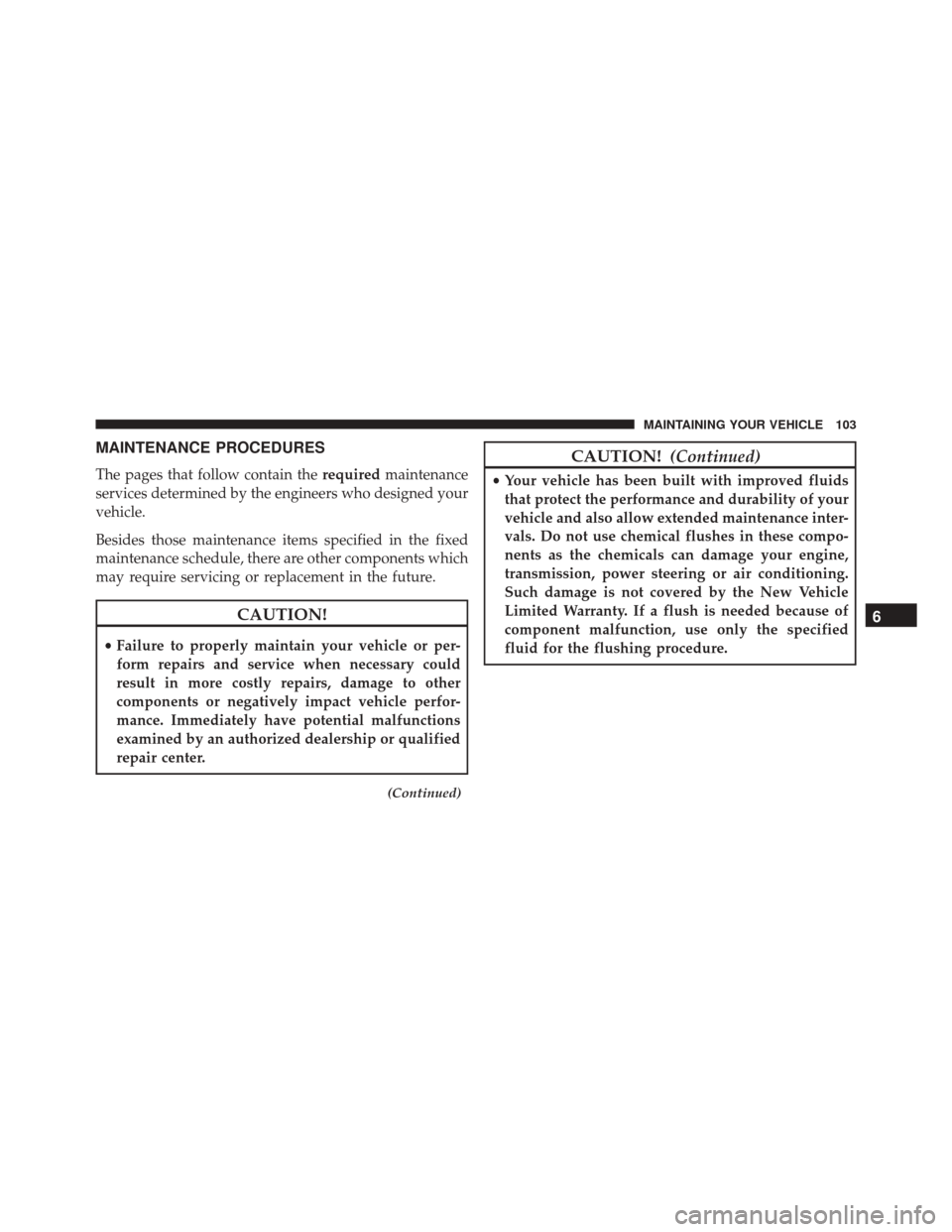Page 92 of 145

the trailer tongue that typically provides adjustable fric-
tion associated with the telescoping motion to dampen
any unwanted trailer swaying motions while traveling.
If equipped, the electronic Trailer Sway Control (TSC)
recognizes a swaying trailer and automatically applies
individual wheel brakes and/or reduces engine power to
attempt to eliminate the trailer sway.
Weight-Carrying Hitch
A weight-carrying hitch supports the trailer tongue weight,
just as if it were luggage located at a hitch ball or some other
connecting point of the vehicle. These kinds of hitches are
the most popular on the market today and they are com-
monly used to tow small and medium sized trailers.
Weight-Distributing Hitch
A weight-distributing system works by applying lever-
age through spring (load) bars. They are typically used
for heavier loads to distribute trailer tongue weight to thetow vehicle’s front axle and the trailer axle(s). When used
in accordance with the manufacturer’s directions, it pro-
vides for a more level ride, offering more consistent
steering and brake control thereby enhancing towing
safety. The addition of a friction/hydraulic sway control
also dampens sway caused by traffic and crosswinds and
contributes positively to tow vehicle and trailer stability.
Trailer sway control and a weight distributing (load
equalizing) hitch are recommended for heavier Tongue
Weights (TW) and may be required depending on vehicle
and trailer configuration/loading to comply with Gross
Axle Weight Rating (GAWR) requirements.
WARNING!
•
An improperly adjusted Weight Distributing Hitch
system may reduce handling, stability, braking
performance, and could result in a collision.
(Continued)
90 STARTING AND OPERATING
Page 104 of 145
ENGINE COMPARTMENT — 3.0L DIESEL
1 — Washer Solvent Reservoir4 — Engine Oil Dipstick7 — Front Power Distribution Center
(Fuses)
2 — Power Steering Reservoir 5 — Brake Fluid Reservoir8 — Jump Starting Location
3 — Engine Oil Fill 6 — Fuel Filter Housing Location9 — Coolant Reservoir
102 MAINTAINING YOUR VEHICLE
Page 105 of 145

MAINTENANCE PROCEDURES
The pages that follow contain therequiredmaintenance
services determined by the engineers who designed your
vehicle.
Besides those maintenance items specified in the fixed
maintenance schedule, there are other components which
may require servicing or replacement in the future.
CAUTION!
• Failure to properly maintain your vehicle or per-
form repairs and service when necessary could
result in more costly repairs, damage to other
components or negatively impact vehicle perfor-
mance. Immediately have potential malfunctions
examined by an authorized dealership or qualified
repair center.
(Continued)
CAUTION! (Continued)
•Your vehicle has been built with improved fluids
that protect the performance and durability of your
vehicle and also allow extended maintenance inter-
vals. Do not use chemical flushes in these compo-
nents as the chemicals can damage your engine,
transmission, power steering or air conditioning.
Such damage is not covered by the New Vehicle
Limited Warranty. If a flush is needed because of
component malfunction, use only the specified
fluid for the flushing procedure.
6
MAINTAINING YOUR VEHICLE 103
Page 125 of 145
Chassis
ComponentFluid, Lubricant, or Genuine Part
Automated Manual Transmission
• Gearbox: Full synthetic 75W-85 manual transmis-
sion fluid meeting the API GL4 specification.
• Control system: MOPAR C Series DDCT SAE 75W
Hydraulic Fluid or equivalent.
• Hydraulic Clutch Operating System: MOPAR
Brake and Clutch Fluid DOT 4 Motor Vehicle or
equivalent.
Failure to use the correct fluid may affect the function or
performance of your transmission.
Brake Master Cylinder We recommend you use MOPAR DOT 4.
Power Steering Reservoir Use Pentosin CHF 11S power steering fluid meeting
FCA US Material Standard MS-11655.
6
MAINTAINING YOUR VEHICLE 123
Page 128 of 145

MAINTENANCE SCHEDULE — DIESEL ENGINE
Your vehicle is equipped with an automatic oil change
indicator system. The oil change indicator system will
remind you that it is time to take your vehicle in for
scheduled maintenance.
Based on engine operation conditions, the oil change
indicator message will illuminate in the instrument clus-
ter. This means that service is required for your vehicle.
Operating conditions such as frequent short-trips, trailer
tow, and extremely hot or cold ambient temperatures will
influence when the “Oil Change Required” message is
displayed. Severe Operating Conditions can cause the
change oil message to illuminate as early as 3,500 miles
(5,600 km) since last reset. Have your vehicle serviced as
soon as possible, within the next 500 miles (805 km).
Your authorized dealer will reset the oil change indicator
message after completing the scheduled oil change. If a
scheduled oil change is performed by someone otherthan your authorized dealer, the message can be reset by
referring to the steps described under “Electronic Vehicle
Information Center (EVIC)” in “Understanding Your
Instrument Panel” for further information.
NOTE:
Under no circumstances should oil change inter-
vals exceed 18,500 miles (29,773 km) or twelve months,
whichever comes first.
Once A Month Or Before A Long Trip:
• Check engine oil level
• Check windshield washer fluid level
• Check the tire inflation pressures and look for unusual
wear or damage
• Check the fluid levels of the coolant reservoir, brake
master cylinder, and power steering and fill as needed
• Check function of all interior and exterior lights
126 MAINTENANCE SCHEDULE
Page 141 of 145

Disposal............................. .106
Filter ............................ .106, 120
Filter Disposal ........................ .106
Materials Added To ..................... .106
Pressure Warning Light ....................28
Recommendation ....................104, 119
Viscosity ......................... .105, 119
Oil Pressure Light ..........................28
Power Steering Fluid ...................... .123
Radiator Cap (Coolant Pressure Cap) ........112,115
Schedule, Maintenance .....................126
Seat Belts Reminder ..............................18
Selection Of Coolant (Antifreeze) ..............120
Signals, Turn .............................44
Speed Control (Cruise Control) ................11Starting
.................................53
Engine Block Heater ......................61
Starting Procedures .........................53
Starting Procedures (Diesel Engines) .............53
Ti re s Pressure Warning Light ....................32
Trailer Towing ..........................95
Tongue Weight/Trailer Weight .................92
Towing .................................88
Guide ................................92
Weight ...............................92
Trailer Towing ............................88
Cooling System Tips ......................99
Hitches ...............................91
Minimum Requirements ...................93
Tips .................................98
Trailer And Tongue Weight .................92
Wiring ................................96
8
INDEX 139